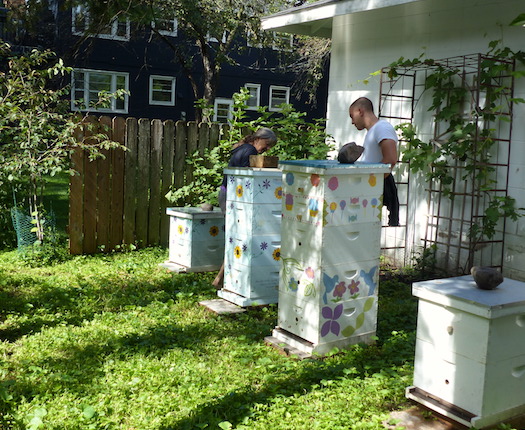Beekeepers whom owns only a few beehives tend to keep them in their private garden or balcony.
However, when one owns beyond 20 beehives, it requires picking out a specific location.
Here are our top 6 tips to do so:
Don’t overcrowd the area
The most restrictive search for a location is when you aim to produce a specific type of honey. You must make sure, out of politeness, not to install your apiary too close to already installed ones, which is usually around 1,5 to 2 miles. If not, the number of bees will be too large, pushing them into competition in the same forage area. Keep in mind that the best way to go is to ask previously-installed beekeepers in the regions, not only to save time but also to create a network and friends.
Think of the bees’ security
Beekeepers must check that the area they want to set up their apiary in is not a flood-risk zone and that it is accessible all year around. In certain geographic areas and especially in forest, fire hazard is also to be considered. The location you choose must be cleaned and cleared regularly, in a larger zone then just where your hives are.
In addition, vehicle access is a primary criterion to consider because it facilitates different operations such as feeding or harvest. It is therefore essential to choose a location that is dry and flat to limit any dangers.
Specific site conditions
In producers’ field crops, the yield of land to apiary have become commonplace because the pollination induced by bees increases seeds productions. However, when a beekeeper asks farmers for lands in the countryside or in the mountains, it is usually requested to either offer honey pots (around 2 pounds/beehives/year) or to pay rent.
Renting prices: honey or cash?
For a 30 hives apiary, the landowner would therefore receive 30 pounds of honey. But, because some honeydews such has lavender are highly requested by consumers, some can request up to 66 pounds per apiary. In some cases, landowners choose to receive their rent in cash rather than beekeeping products.
Networking is key
The contacts you create with other beekeepers or with individuals you meet when collecting swarms are both important when choosing a location. They may allow you to discover other options you haven’t thought of or even offer you a location. Don’t forget to thank them with a honey pots!
Favourable biotope’s criteria
South/South-East exposure is the best option. Your apiary must also be protected from strong wind. In mild climate, sunshine and heat don’t seem to be an issue as long as the bees have access to water. On the other hand, shaded and moist zones don’t agree with them.

